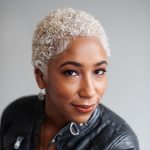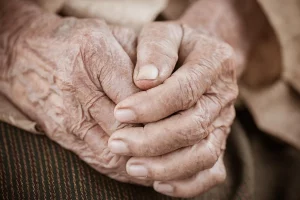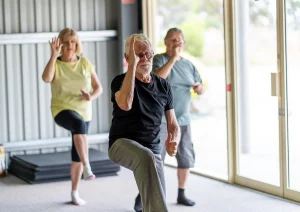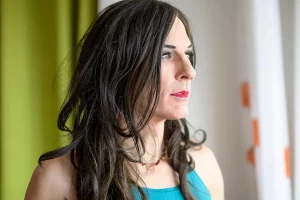
TRAYVON MARTIN, FREDDIE GRAY, MICHAEL BROWN, SANDRA BLAND, and many other victims of police brutality have recently become household names across the U.S. and around the world. Like their blood on streets and cells, stories of their murders and lives — before unceremonious interruption at the hands of white police officers — have soaked the pages of newspapers and commanded hours of televisions coverage. Their stories have become our stories, and their fates have become our fears, even more now — with better reporting through investigative and citizen journalism — than before. Black Lives Matter has used social media to draw attention to injustices, give voice to unspoken truths, and demand full participation in the revolution unfolding in front of us. Facebook and Twitter are among the most formidable and accessible weapons that combat silence, turning apathy and acceptance into collective action.
While based in the U.S. and focused on the institutional racism that has led to the attack on black bodies, the Black Lives Matter movement has crossed borders, becoming an international call to recognize the value of life, the right to life, and the threat to life when one’s skin reflects the history of displacement, slavery, and systemic oppression. It has used two tactics in tandem: occupation and protests and social media. The Black Lives Matter movement is inclusive, active, and varied in its approach, using physical presence to confront and digital presence to rally and connect — the perfect example of movement building.
Identify the priority. Who is your work for? Name them without apology or euphemism.
The U.S. is not the only country with mounting issues of race, or experiencing amplification of deep-rooted racial tension and injustice. Using #BlackLivesMatter has successfully brought these issues to the fore and, through the combination of circumstance and space, constructed a balance of comfort and challenge for participation in revolutionary conversation and action. It identifies black people as priority without divorcing itself from other marginalized groups. In its name and its purpose, #BlackLivesMatter is for, by, and about black people, and calls into question the idea that we live in a post-racial society, especially in countries where white people are not the numerical majority.
Know your end goal, and use what you have to get there.
In many predominantly black countries, racism is unrecognized and ignored. Knowing the numbers, hearing the names, and seeing the faces of black people slain by police in the U.S. — often viewed as a greener pasture — stirs something in people of other nations. The stories get under our skin, stir us, and shift our perspectives of the world we live in. #BlackLivesMatter has been the catalyst for introspection, investigation, and interrogation of personal, institutional, and national politics and culture. It has sparked conversations that lay dormant, whether because of fear, ignorance, or discomfort. The space has been created, language adopted, and sentiments shared with the U.S. taking the global stage, its dirty laundry aired for the world to see. The timing is perfect for national dialogues about race and the impact racism has on people all over the world. #BlackLivesMatter raises awareness, creates and maintains a platform, and fosters confidence in taking action. Social media is no longer an underestimated tool, and is being used with more skills and intentionality, its organizers recognizing the potential permanence of messaging and networking.
Be flexible, and allow others to use your success and visibility as a springboard.
Unlike the U.S., predominantly black countries generally have black government leaders, law enforcement, juries, lawyers, and teachers. Black people are frontline staff in commercial banks, hotels, and restaurants, and are owners of local businesses. They often graduate from the same high schools, though race and class differences frequently coincide, resulting in white people having access to more prestigious institutions and opportunities. Though we see the faces of black people in our everyday interactions, it is no secret that the people behind closed doors, reaping the benefits of the work of those visible black people, are white. In many cases, black-run institutions — the government, schools, and law enforcement — are ruled by inherent racist policies that continue to go unnoticed and, subsequently, unchallenged.
Public schools, especially those in inner city areas — densely populated by black people with lower incomes — are one example, often plagued by police presence. It both responds to and perpetuates the idea that black people are violent and dangerous. Similarly, in countries dependent on and known for their tourism industries, police presence is heavy for the protection of tourists and the control of residents. In many cases, access to attractions and hotels is restricted, and police depend on race to identify those who “belong.”
#BlackLivesMatter is both specific and universal enough to garner collective buy-in and allow for individual actions to fit into its scope and strengthen the central movements and its offshoots. Though black people are the majority in the cases of these countries, like my native Bahamas, the power differential has not been disrupted, and #BlackLivesMatter remains relevant.
Share ownership. Welcome others, and give them freedom to adapt language and actions as needed.
The Black Lives Matter movement lives and breathes, and inspires others to take action. Even the most cursory study of its origin, development, growth, and continuity teaches the basics of building a movement from the ground up, the effectiveness of decentralization, and appropriate responses to criticism from both supposed allies and opposing parties. Black Lives Matter shares joy and pain, struggle and triumph, lessons and foibles, continuing in its transparency and accountability, ensuring that we don’t all have to make the same mistakes. The movement is public, accessible, dynamic, and revolutionary, changing and adapting before our eyes — a case study writing itself into the history that will change our future.
















